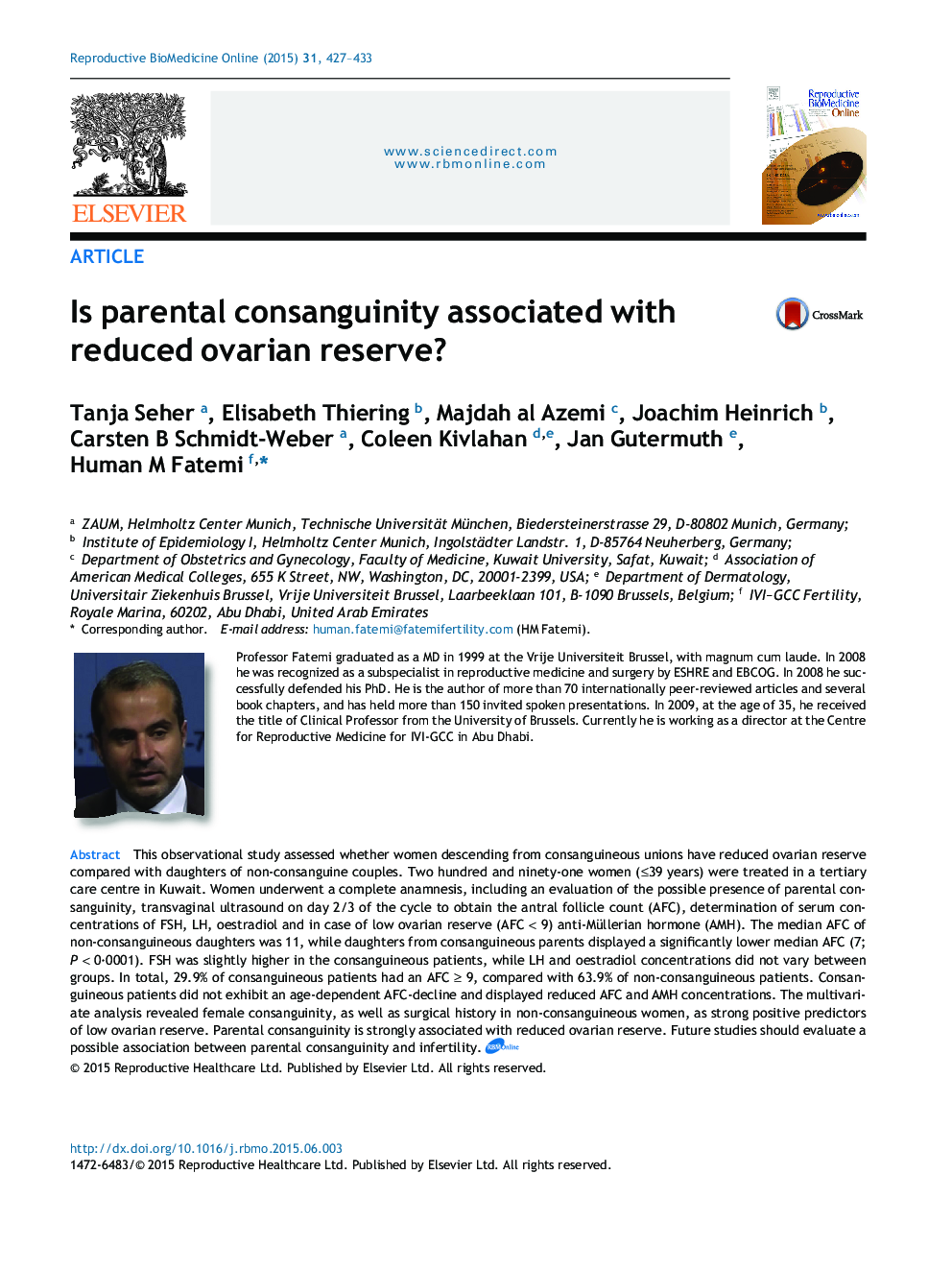| Article ID | Journal | Published Year | Pages | File Type |
|---|---|---|---|---|
| 6188789 | Reproductive BioMedicine Online | 2015 | 7 Pages |
This observational study assessed whether women descending from consanguineous unions have reduced ovarian reserve compared with daughters of non-consanguine couples. Two hundred and ninety-one women (â¤39 years) were treated in a tertiary care centre in Kuwait. Women underwent a complete anamnesis, including an evaluation of the possible presence of parental consanguinity, transvaginal ultrasound on day 2/3 of the cycle to obtain the antral follicle count (AFC), determination of serum concentrations of FSH, LH, oestradiol and in case of low ovarian reserve (AFC < 9) anti-Müllerian hormone (AMH). The median AFC of non-consanguineous daughters was 11, while daughters from consanguineous parents displayed a significantly lower median AFC (7; P < 0â 0001). FSH was slightly higher in the consanguineous patients, while LH and oestradiol concentrations did not vary between groups. In total, 29.9% of consanguineous patients had an AFC ⥠9, compared with 63.9% of non-consanguineous patients. Consanguineous patients did not exhibit an age-dependent AFC-decline and displayed reduced AFC and AMH concentrations. The multivariate analysis revealed female consanguinity, as well as surgical history in non-consanguineous women, as strong positive predictors of low ovarian reserve. Parental consanguinity is strongly associated with reduced ovarian reserve. Future studies should evaluate a possible association between parental consanguinity and infertility.
